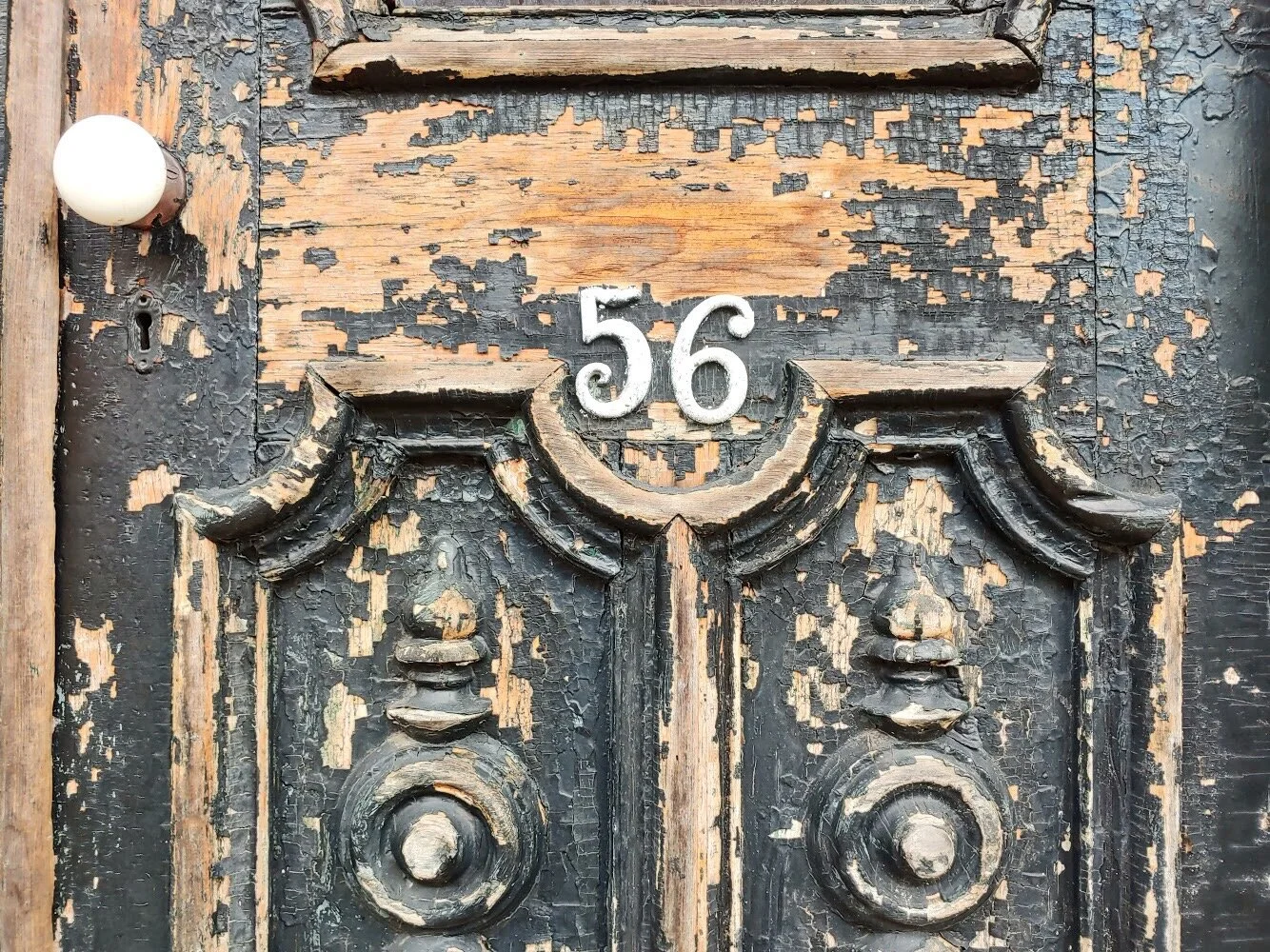A house built in 1873 Jim is dismantling
At Scoville Brown, you won’t find a chaise lounge or ottoman, but instead a fireplace mantel or stained-glass window. Jim Braunscheidel is in the business of architectural salvage. Unless you’re in the home building or resto industry, or a fan of HGTV’s Fixer Upper, you might not be familiar with what architectural salvage is or what it involves.
When a building or home is scheduled to be demolished, Jim goes in and dismantles it, painstakingly removing items of value or intrigue, decorative or functional, including wooden floors, barn doors, crown molding – anything that displays fine craftsmanship or reflects historical significance – and finding other uses for them. This could mean repurposing these items into original designs, or working with clients on a new construction or renovation project. It’s an arduous process of recycling, reducing, and reusing very old and important architectural details that might otherwise be discarded and lost forever.
Based in Wellsville, New York, Jim was on a jobsite when we chatted with him – a house built in 1873, just two properties up from his shop. “It’s been neglected for 40 years,” he said. “The real estate in our area is depressed, and it doesn’t make sense financially for the owner to restore it. So, what do you do with it? I am willing to disassemble it. It’s not profit-motivated. It’s about preserving the history of it.”
Front door of the salvage project
This is Jim’s passion; one that he has carved into a career. “I started off as a carpenter by trade. I was a homebuilder for 20 years until I had an accident. I was on a jobsite, restoring an elevator, and the car turned on by itself and started moving downward. My leg was caught and injured badly. I was in the hospital for a month. At the time, I had a very successful construction business. I lost everything. I had to redefine myself,” Jim says. “I had been collecting architectural salvage when a friend told me people want to buy this stuff.”
This is how he got his start, working with clients who were restoring their homes and in need of authentic architectural elements. “When the housing market crashed, I had to redefine myself again,” Jim says. “I took what I learned from my days as a carpenter and started to build things from the salvage. At Brimfield, around 2008, I had a very inspired set-up. In walked people from all of the high-end retailers and within an hour, I sold as much as it now takes me a month to accomplish – it was crazy!”
“They all reached out after the show for custom pieces. I chose to work with Ralph Lauren Co. It started with simple riser platforms and crates and led to display tables. In 2015, I built over 100 tables, a focal point in flagship stores all over the world. But, in 2016, Ralph Lauren restructured, slashing its budget on store development, and I built two tables. This rocked my world again. It was, like, now what?” Jim found himself rebuilding again.
“I met Paul Michael, and he invited me to Market Hill,” he says. “We connected. My father, who passed away a few years back, was my rock. Like Paul, my father was firm but fair, expecting the best but understanding. I feel part of the family at Market Hill. I am accepted, and it encourages me to grow and expand.”
Another part of his business is expanding his client base, connecting the right people with the right products. “I am new to Texas. I am looking for the right customers to find me. Getting these pieces and parts in the hands of the right people is a priority. It’s why I do what I do.”
Meet Jim at Market Hill to hear more about his passion and process and to find the missing piece for your project while also preserving a bit of history.
Follow on Instagram @ScovilleBrownCo















